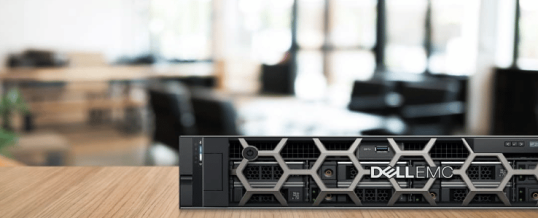
Configuring a Small Business Server
So you’ve decided that you need a server for your small business. Now you need to figure out how to configure the server. There are many important factors to consider when building your server, as there is not a 1 size fits all solution. When our customers ask us what server configuration they need, our response is usually mixture of the questions below. IT distributors aren’t familiar with your environment, and it is difficult to recommend a configuration without knowing the information below. Without further ado, here are the most important factors to consider when you are determining how to configure a server for your small business:
This should go without saying, but you’d be suprised…
Do you have the proper environment to deploy a server?
Servers tend to run hot, no matter the size. Sticking it on a shelf in a hot warehouse will likely cause overheating and dust build-up issues. A proper location to place a server is in a temperature-controlled room with little foot traffic to avoid accidents or unnecessary tampering. Don’t be this guy.
What are you using it for?
An Active-Directory Server is completely different than a SharePoint, or large objects server. How much compute power you need will depend on the type of server you are building.
If you are building a small a file share server with less than 20 users, an entry level server like the Dell R340 or HP ML30 will likely be sufficient.
What applications will it be running?
This goes hand-in-hand with the last question. Is it a SQL server? Hosted exchange? Or just a file store? You will need to consider the applications and how much processing, storage and memory you will need.
Do you need to virtualize it?
No! However, it does help with backup, recovery, performance allocation, and enabling other virtual systems in the future. We recommend virtualization via VMWARE – See this blog post to determine which level of VMWARE is right for you.
What kind of budget are you dealing with?
Don’t want to spend a lot of money? You can save thousands per server by buying used, and it does not come with any real downside. Servers are made to withstand a decade or more of abuse. Modern third party server maintenance has caught up to the manufacturers. As such, if purchase price is a concern, this is an easy area to cut costs.
A 1 or 2 generation old server can put thousands of dollars back into your IT budget, all while offering very similar performance benchmarks.
Which server should I buy for my small business?
HPE and Dell are the gold standard. The Proliant and Poweredge Series have been battle-tested for decades and remain the top 2 manufacturers for small and medium sized business, and for good reason.
Does a rack server perform better than a tower server?
It does not in a like-for-like configuration. However, a rack server has better airflow, and can be configured to a more robust specification with better processors, more memory, and more storage options.
Hopefully was a helpful checklist in helping you determine how to best configure your server. Modern servers are very powerful and efficient compared to their predecessors.
When in doubt, remember the golden rule of compute power: You can always have too much, but you never want to have too little.
Share
SEP
